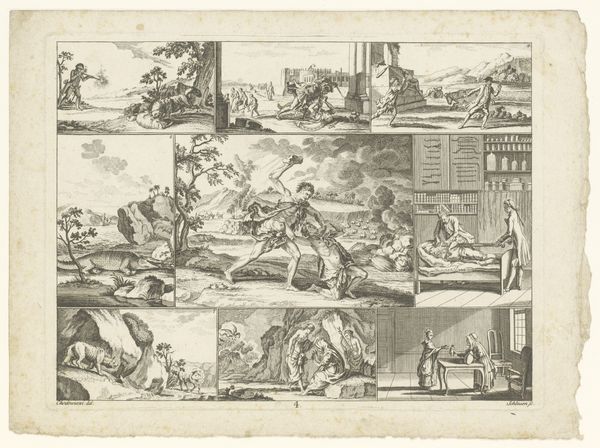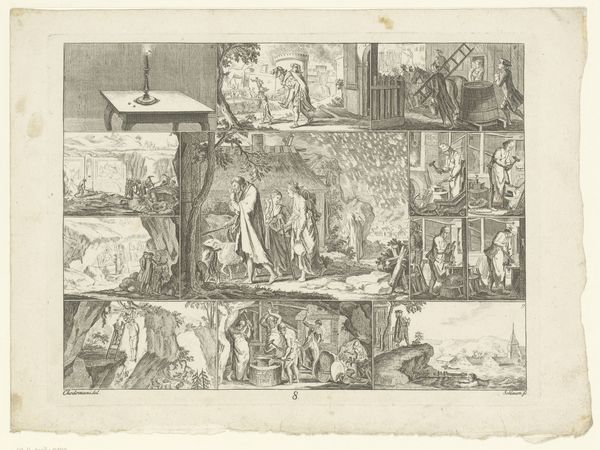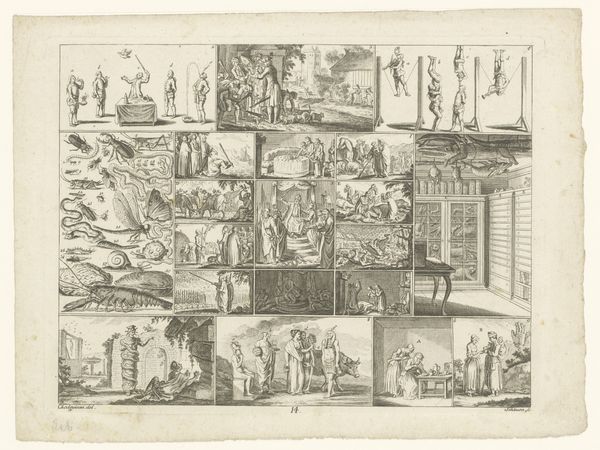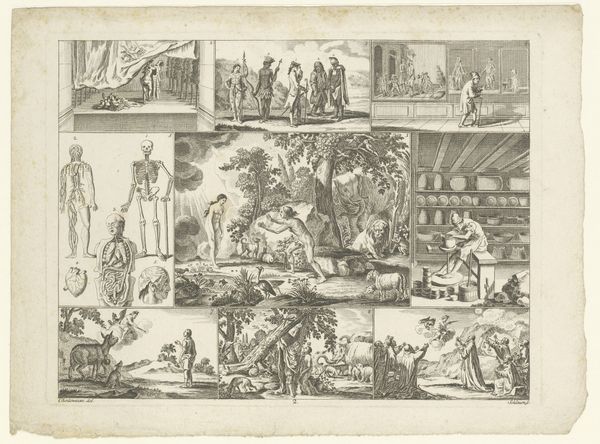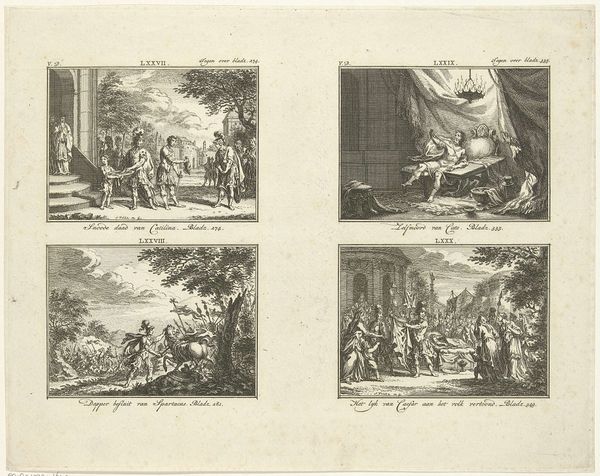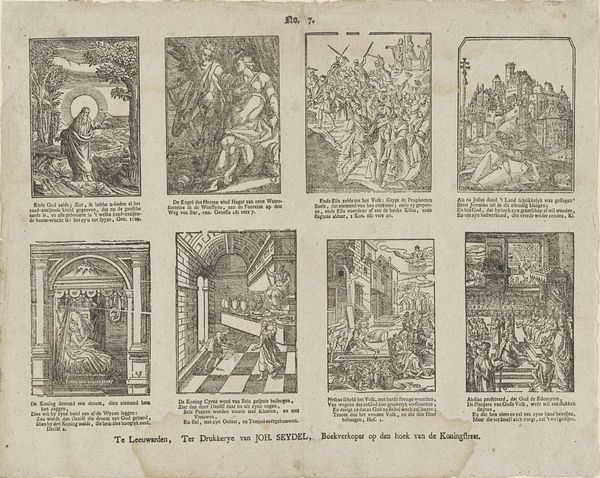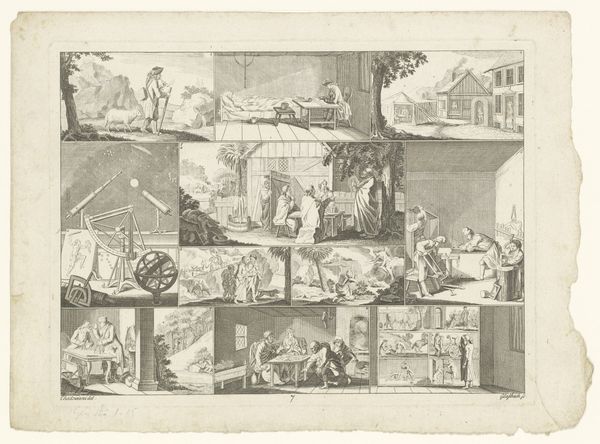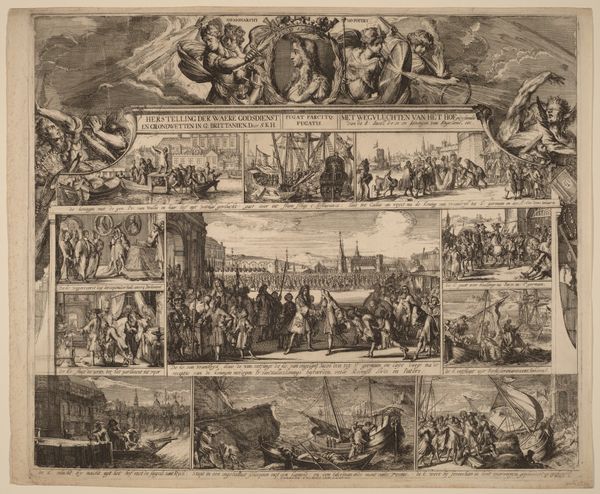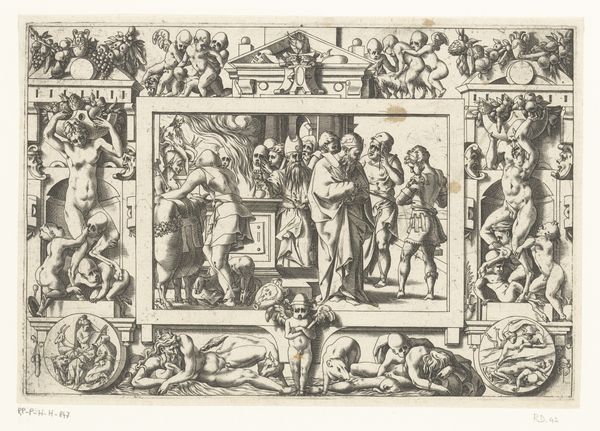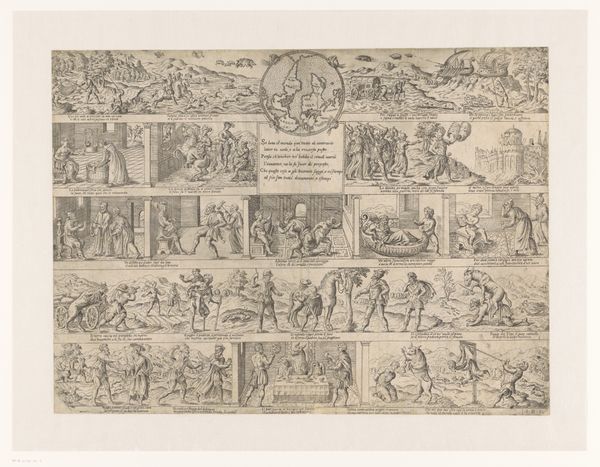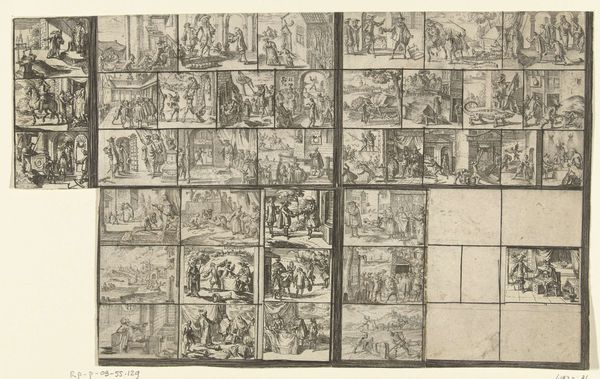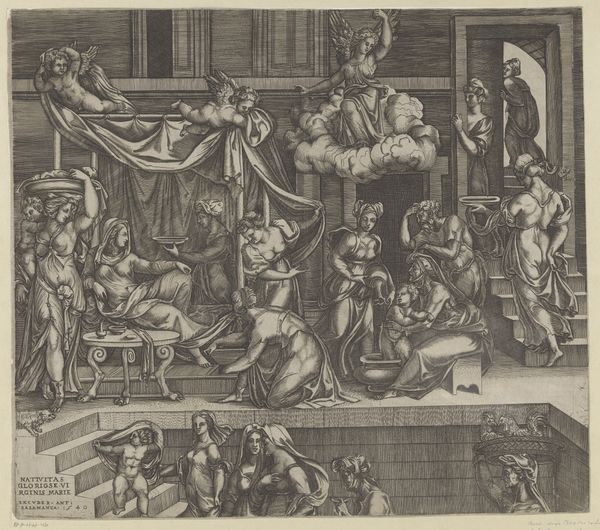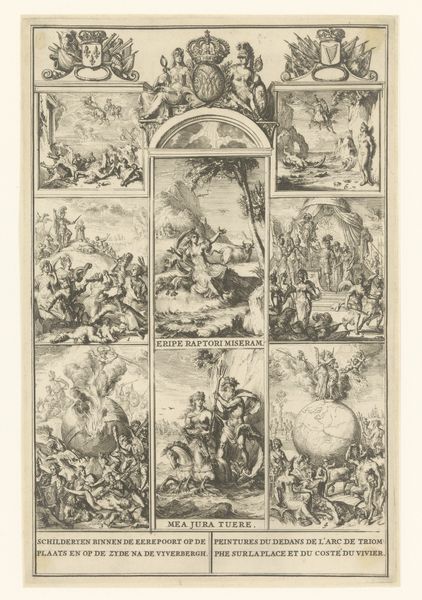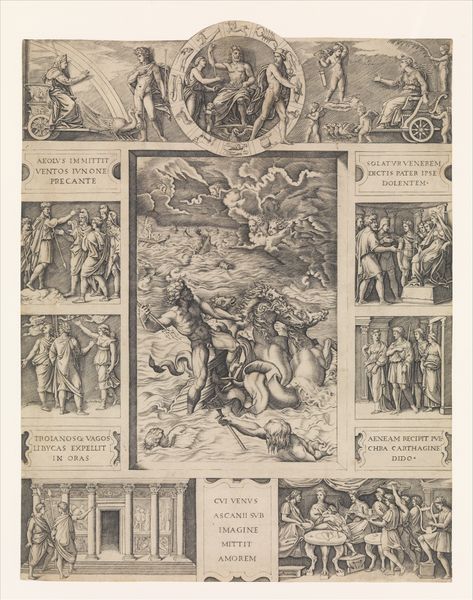
Dimensions: height 210 mm, width 278 mm
Copyright: Rijks Museum: Open Domain
This print, made by Arthur F. Krüger, presents scenes from the story of Joseph. It's made using etching, a printmaking technique that requires skilled labor and specialized knowledge. The image begins with a metal plate, likely copper, that is coated with a waxy, acid-resistant substance called a ground. The artist then scratches an image into the ground, exposing the metal beneath. When the plate is submerged in acid, the exposed lines are etched into the surface. This process requires multiple stages of applying ground and etching to achieve depth and detail. The printing press itself is an industrial machine, representative of the new possibilities for mass production, of the time. Each print requires time, labor, and skill. The uniformity of the line, made possible through the chemicals and the mechanics of the printing press, allows for widespread dissemination, transforming an original artwork into a reproducible commodity. Ultimately, prints like these democratized art, allowing wider audiences to engage with religious narratives. It collapses distinctions between art and craft, inviting us to consider the social and economic forces embedded within the artwork's creation.
Comments
No comments
Be the first to comment and join the conversation on the ultimate creative platform.
